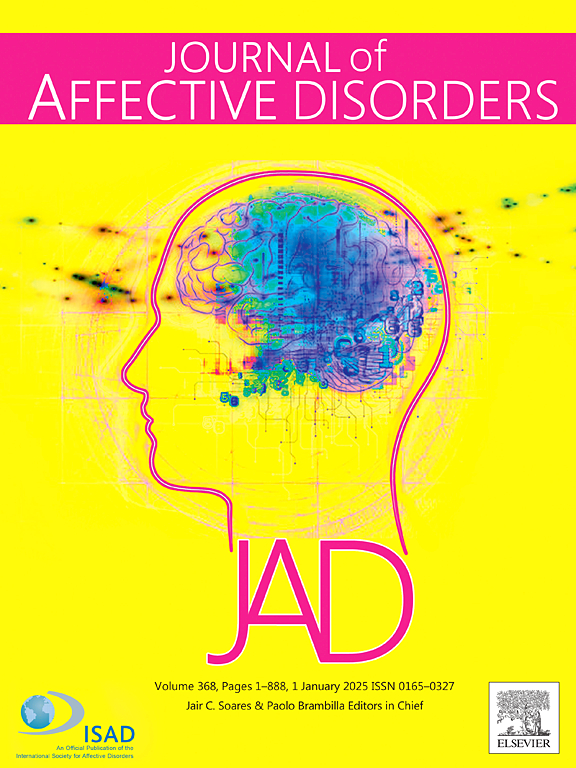社区环境对青少年焦虑和抑郁的影响:一个包含屏幕时间和家庭功能的有调节中介模型。
IF 4.9
2区 医学
Q1 CLINICAL NEUROLOGY
引用次数: 0
摘要
目的:虽然社区环境与青少年心理健康之间的关系已被充分记录,但很少有研究调查屏幕时间和家庭功能在这种联系中的作用。本研究旨在探讨社区环境、屏幕时间和家庭功能如何共同影响青少年焦虑和抑郁,以探索“环境-行为-健康”通路。方法:对中国5 -12年级青少年进行大规模两波调查。本研究构建了一个有调节的中介模型,以检验屏幕时间是否在邻里环境与青少年焦虑、抑郁之间起中介作用,以及这种间接效应是否被家庭功能调节。结果:最终样本包括8961名中国青少年。社区环境与青少年屏幕时间呈负相关(b = -0.513,p )。结论:本研究扩展了“环境-行为-健康”框架,强调了多层次策略支持青少年心理健康的必要性。本文章由计算机程序翻译,如有差异,请以英文原文为准。
The impact of neighborhood environment on adolescent anxiety and depression: A moderated mediation model involving screen time and family function
Objective
While the relationship between neighborhood environment and adolescent mental health is well-documented, few studies have examined the roles of screen time and family function in this association. This study aims to explore the “environment-behavior-health” pathway by investigating how neighborhood environment, screen time, and family function jointly influence adolescent anxiety and depression.
Method
Data were drawn from a large-scale, two-wave survey of 5th–12th grade Chinese adolescents. A moderated mediation model was constructed to examine whether screen time mediates the relationship between neighborhood environment and adolescent anxiety and depression, and whether this indirect effect is moderated by family function.
Results
The final sample included 8961 Chinese adolescents. Neighborhood environment was negatively associated with adolescents' screen time (b = −0.513, p < 0.001), anxiety (b = −0.984, p < 0.001) and depression (b = −1.357, p < 0.001). Screen time partially mediated the effects of neighborhood environment on anxiety (b = −0.048, 95 % CI [−0.075, −0.025]) and depression (b = −0.068, 95 % CI [−0.102, −0.039]). Moreover, family function significantly moderated the association of neighborhood environment with anxiety (b = −0.441, p < 0.01) and depression (b = −0.401, p < 0.05), as well as the association of screen time with anxiety (b = −0.055, p < 0.01) and depression (b = −0.051, p < 0.05).
Conclusion
These findings extend the “environment-behavior-health” framework and highlight the need for multi-level strategies to support adolescent mental health.
求助全文
通过发布文献求助,成功后即可免费获取论文全文。
去求助
来源期刊

Journal of affective disorders
医学-精神病学
CiteScore
10.90
自引率
6.10%
发文量
1319
审稿时长
9.3 weeks
期刊介绍:
The Journal of Affective Disorders publishes papers concerned with affective disorders in the widest sense: depression, mania, mood spectrum, emotions and personality, anxiety and stress. It is interdisciplinary and aims to bring together different approaches for a diverse readership. Top quality papers will be accepted dealing with any aspect of affective disorders, including neuroimaging, cognitive neurosciences, genetics, molecular biology, experimental and clinical neurosciences, pharmacology, neuroimmunoendocrinology, intervention and treatment trials.
 求助内容:
求助内容: 应助结果提醒方式:
应助结果提醒方式:


